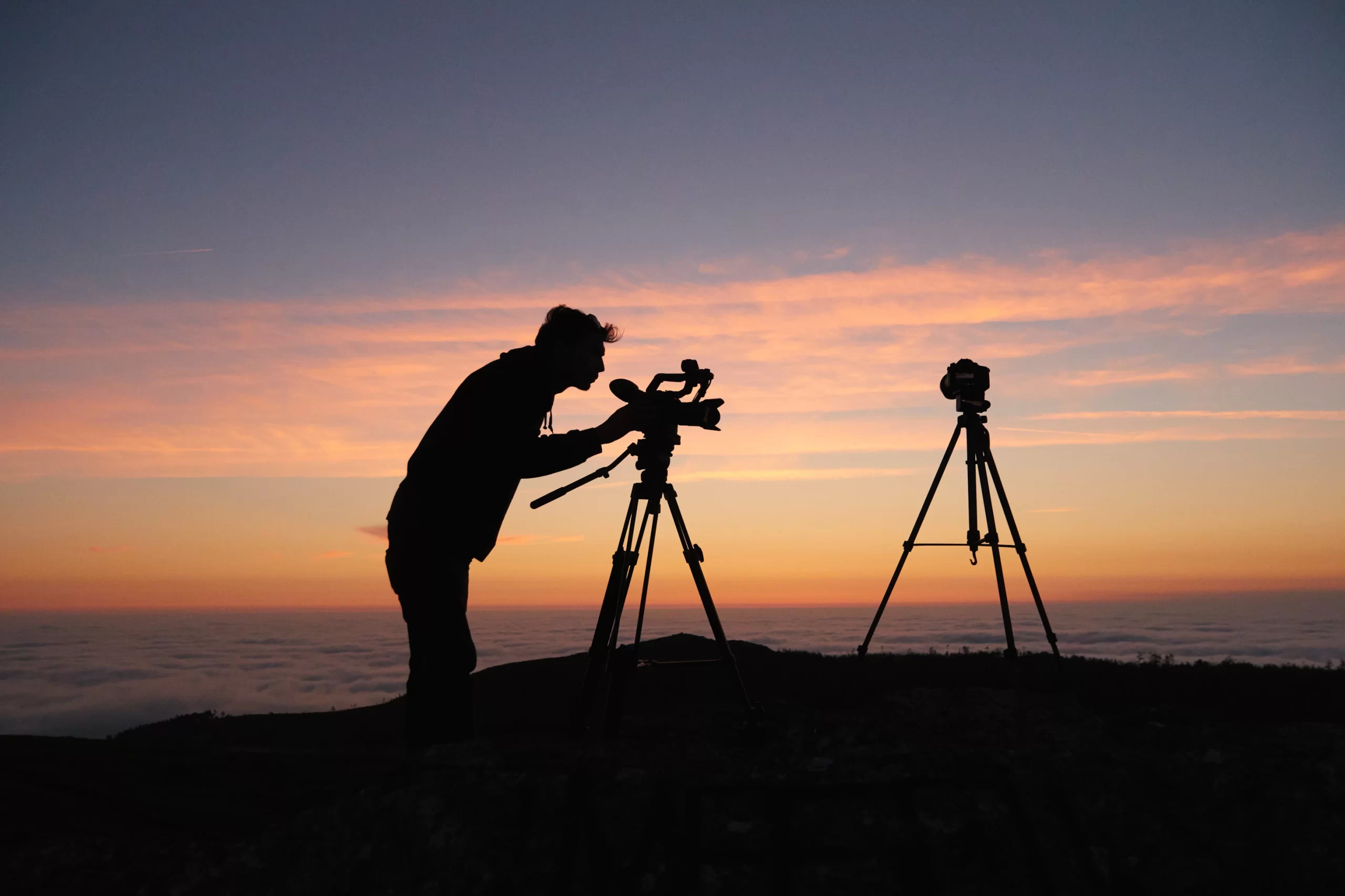Welcome, aspiring videographers! Whether you’re holding a camera for the first time or looking to elevate your skills to the next level, embarking on a videography journey is an exciting adventure. In this guide, we’ll navigate the steps you need to take to develop a unique style, and establish your presence in the dynamic world of video-making and cinematography.
1. Equip Yourself with the Right Gear
Your journey begins with the tools of the trade. Although you can substantially cut in your expenses on gear, it’s recommended to invest in a quality camera (your phone can be just fine in most cases), microphone, and lighting equipment to ensure your videos meet professional standards. Remember, it’s not about having the most expensive gear but understanding how to maximize the potential of what you have!

2. Learn the Basics of Videography
Before diving into complex techniques, grasp the fundamentals of videography. Understand concepts like composition, framing, and lighting. Familiarize yourself with your camera settings, learning how to control exposure, focus, and white balance. A strong foundation sets the stage for your creative growth.

3. Immerse Yourself in Learning Resources
The world of videography is vast, and continuous learning is key. Explore online courses, tutorials, and communities dedicated to videography. Platforms like YouTube, Skillshare, and online forums offer a wealth of knowledge from experienced creators. Don’t be afraid to absorb information and seek inspiration from others.

4. Practice Consistently
Mastering videography is a hands-on process. Practice consistently to refine your skills. Experiment with different shooting styles, storytelling techniques, and editing methods. Every project, no matter how small, contributes to your growth as a videographer.

5. Build a Videographer Portfolio
Assemble a portfolio showcasing your best work. This collection serves as a visual resume, allowing potential clients or employers to see your skills and style. Include a variety of projects to demonstrate your versatility, from short films to promotional videos.

6. Establish an Online Presence
In today’s digital age, an online presence is crucial. Create a website or utilize social media platforms to showcase your portfolio and share insights into your videography journey. Engage with the videography community, collaborate with fellow creators, and stay updated on industry trends. A few examples would be Instagram, Pinterest, Facebook, YouTube, TikTok.

7. Network and Collaborate
Networking is a powerful tool in the videography world. Attend industry events, connect with professionals, and seek collaboration opportunities. Working with others not only expands your skill set but also opens doors to new projects and experiences.

8. Seek Constructive Feedback
Embrace constructive criticism as a catalyst for improvement. Share your work with peers, mentors, or online communities to receive valuable insights. Constructive feedback helps you identify strengths and areas for growth, propelling your videography skills to new heights.

Remember, the journey to becoming a skilled videographer is a marathon, not a sprint. Stay passionate, be open to learning, and enjoy the process. Your unique voice and vision have the potential to leave a lasting impact on the world of videography.



